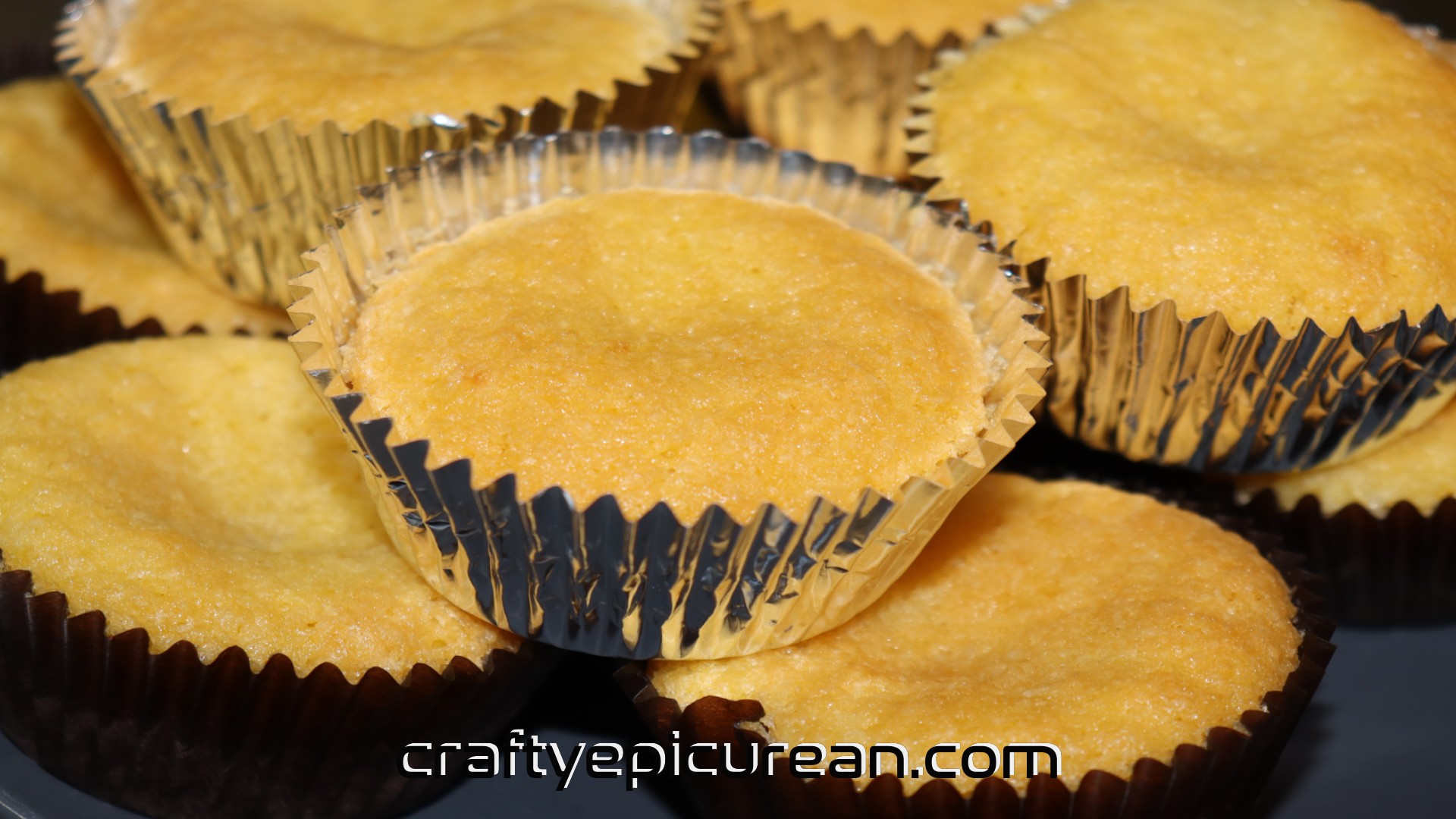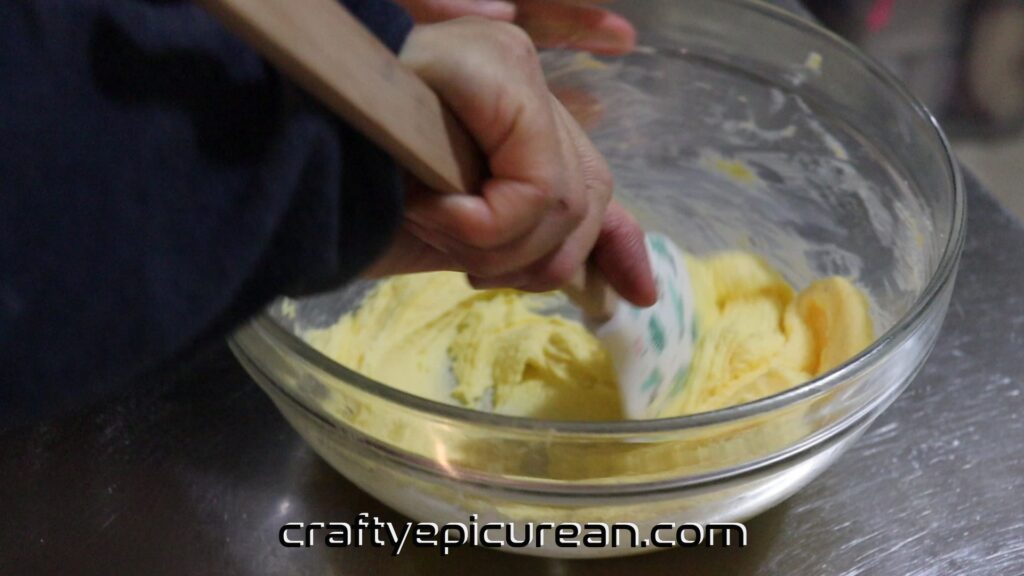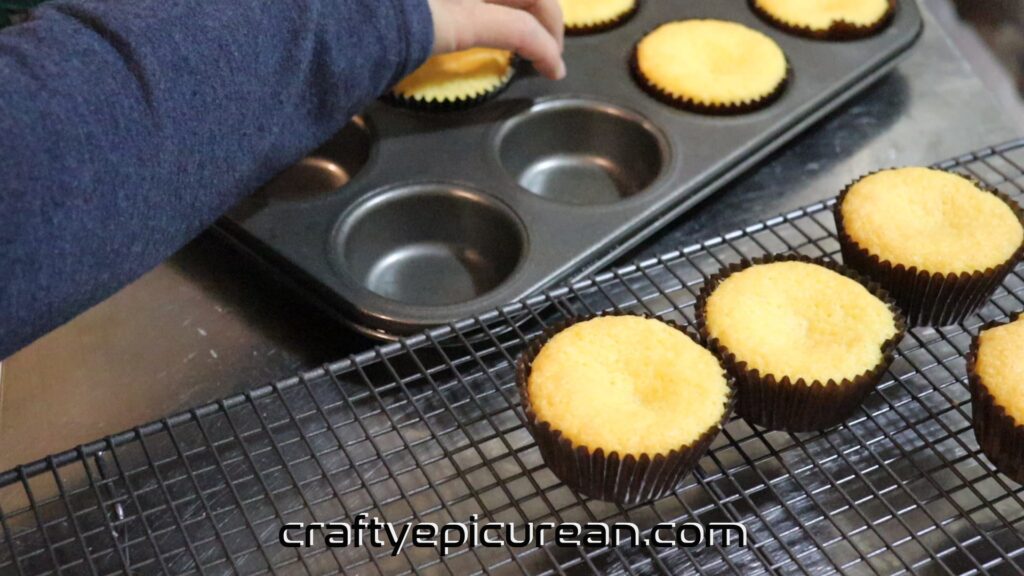Vanilla Cupcakes (gluten free, dairy free, vegan)

These vanilla cupcakes are not only gluten free, they are dairy free vegan and delicious too! You will find this recipe for vanilla cupcakes is super quick and easy to make and quite soft and tasty to eat.
Of course, once cooled these cupcakes can be iced to make them fancy especially if they have sunk in the middle (which this batch happened to do) but I find they are perfect just how they are; sunken centres and all.
For a video of how I made these dairy free, gluten free, vegan cupcakes just click on the link below – this shows me using chicken eggs but just replace with flaxseed eggs if you require recipe to be vegan (recipe works fine with flaxseed eggs @ 1:3 flaxseed meal:water ratio):
I like to cream the mixture by hand using a silicon spatula. However, you may like to give you arm a break and use a stand mixer or even a food processor to get through the creaming stage.

Just be sure to carefully fold the egg, flour and vanilla essence by hand as over mixing can result in dense rock-like cupcakes and/or sunken centres rather than the pillow soft texture we are aiming for.

I usually make 12 standard cupcake sized morsels of this recipe but 24 mini muffins could be made with this quantity of mixture too.

Recipe calls for a preheated oven temperature of 180 degrees celcius. This is for an oven set to standard bake. If you are using fan bake, ensure you drop the temperature to 160 degrees celcius.

It is best to remove the cupcakes from the tin straight after taking them out of the oven to prevent them from overcooking or burning the sides of the cupcakes. However, if you are stripped for time, have not used paper lined muffin holes or do not mind a bit a caramelizing on the outside of your cupcakes, then feel free to just leave them to cool in the tin. Of course this this means that they will take longer to cool and thus there will be a longer wait before you can ice them.

Why did my cupcakes sink?
As my feature photo and process video shows, most of my cupcakes have sunk in the middle. A quick fix is to ice the cupcakes and hid the mistake; quickly piping a good dose of buttercream on top of each cupcake is sure to give an impressive finish to some disappointingly deflated cupcakes. There are few reasons why cupcakes sink or deflate in the middle and some of these reasons are easy to fix. Here I give you 4 possible reasons why my cupcakes sunk.
1. Over mixing
Over mixing the mixture once the leavening agent has been added is a sure fire way to end up with a deflated cupcake as a result. This also results in a denser than intended texture too. This is most likely the reason why this particular batch of cupcakes came out sunken in in the middle. I say this because I had my two little dude ‘helping’ in the kitchen and gave them each a go at mixing the batter. However, lucky for me they love baking; they love the result of baking even more and are not too fussed about how they look so long as they are delicious!
2. Premature Oven Door Opening
For those amongst us that are over eager and cannot wait for our baking to cook through, it can be all too tempting to open the oven door and give them a quick check to see if they are ready. However, this can lead to the inaction of the leavening agent causing the cupcakes to sink in the middle and not rise to their full potential. Moral of the story here is, be patient, good things take time, and just follow the recipe and keep those cupcakes in the oven with the oven door closed for the duration specified.
3. Incorrect Oven Temperature
Sinking cupcake centres can be the result of baking them in an oven that is too hot. If you think this may be your problem, try using an oven thermometer to make sure you are at the correct temperature for your recipe. Although you set your oven to a set temperature, the dial may not be well calibrated to the temperature it actually sets the oven too or you may have a faulty thermostat. If you find your oven is way off the dialed setting you might like to get your oven serviced and/or calibrated. Also, make sure you have chosen the correct oven setting ie. fan bake or standard bake, you can end up baking at too high a temperature if you accidentally set your oven to fan bake using the standard bake temperature setting.
4. Inactive Leavening Agent
How old is your baking powder? (or baking soda). Leavening agents such as baking powder and baking soda can expire and lose their raising power. If you suspect this might be the case, you can test if your baking powder or baking soda is still active by carrying out the following tests:
Check your baking powder:
Add 1/2 tsp baking powder to 1/4 cup hot water. If it fizzes or froths it is still good to use, if you get little reaction when you add the baking powder, then it is time to head to the store and buy some fresh baking powder.
Check your baking soda:
Similar to the good ole volcano experiment most of us are familiar with from our school day…add 1/2 tsp baking soda to 1/4 cup vinegar. Again fizzing and frothing is the positive sign you are looking for to say that your baking soda is still good to use in baking.
When carrying out either of these tests make sure that you use a bowl or jug with a wide opening as both test will cause the mixture to rise and froth and it is always better to keep it in the vessel being used rather than have a mess all over your kitchen bench to clean up.
If you prefer to watch a video on how to carry out these tests, check out the video below:
Vanilla Cupcakes (GF) (DF) (Vegan)
Serves 12
Cream margarine and sugar together until light and creamy.
Combine rice flour and baking powder.
Fold into the creamed mixture one egg and half the dry ingredients.
Fold in remaining egg and dry ingredients along with the vanilla essence until just combined.
Fill each paper lined cupcake tin hole with mixture until about three quarters full.
Bake in preheated oven for 15 minutes or until a skewer or toothpick comes out clean.
Remove from oven place each cupcake onto a cooling rack.
Once cooled, cupcakes can be iced.